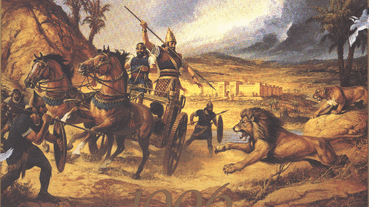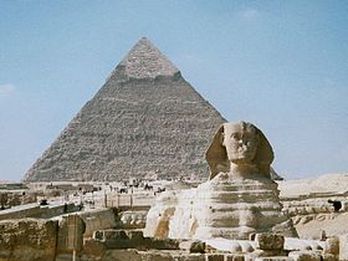Mesopotamia

Ancient Sumerian Warriors defend their city from the wild beast
When Mankind first started to band together in permanent settlements, their structures needed to be sturdier and more durable than simple straw huts. Around 3000 B.C.E civilization began to sprout up around modern day Iraq, known as the "Cradle of Civilization" Mesopotamia very quickly became populated with many individual City-States such as the Sumerians, Babylonians, Akkadians, and finally the Hittites. These city states introduced a very unique style of architecture to fit their way of life including ziggurats, fortresses, and elaborate temples dedicated to their gods. Their cities were built around these elaborate temples symbolically ensuring that religion was the center of their society This shift of architecture took place over hundreds of years and was very slow to develop. Although job specialization existed, their surplus of food was minimal and slowed development of other aspects of society. All civilizations that called Mesopotamia home were striving to understand their own existence and found solace in their gods. Their urban planning and architecture reflected this and affected much more than that.
Egypt

The only remaining ancient wonder of the world
Around 3150 B.C.E the Egyptian civilization was taking its first steps on the path to greatness. Along the banks of the Nile in Northern Africa, the Egyptian people were equipping themselves to become the worlds great civilization. The Egyptians truly brought meaning to the words "Public Works" creating huge monuments dedicated to their Pharaohs and Gods. The Egyptian rulers enslaved thousands of people and forced them to build extravagant buildings that took many years to complete. These monumental buildings were constructed each time a new ruler took over, the rulers built them to ensure their safe passage into the afterlife. Although ancient Egypt spent exuberant amounts of time and capital on religious structures, they spent little on defensive forts or walls and suffered for it. Their civilization was conquered many times leading to its eventual downfall from greatness.
